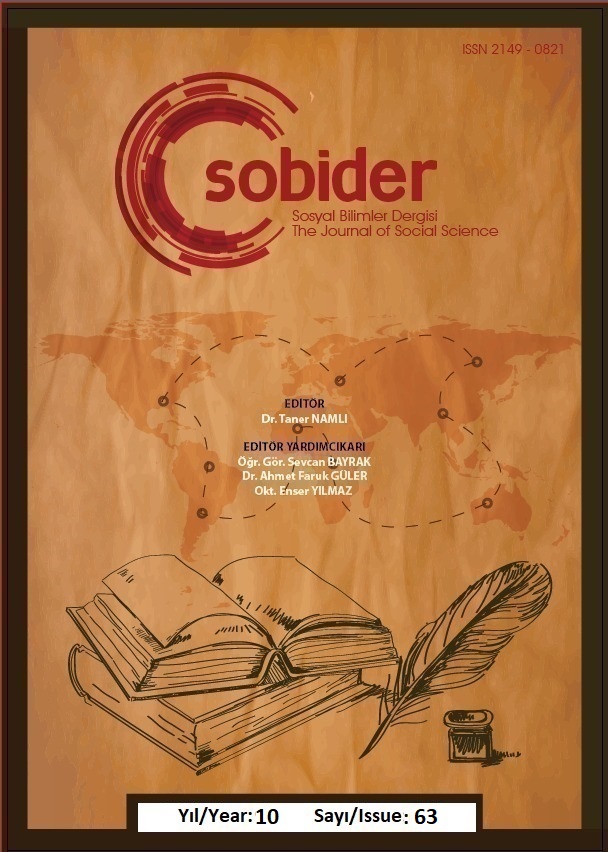Author :
Abstract
Bu çalışmada, Türk Makam Müziği’ndeki uyum ve uyumsuzluk konusu, teori ve icra boyutlarıyla ele alınmıştır. Makam teorisinin, uyumu ön planda tutan bir anlayış içerisinde olduğu anlaşılmaktadır. İlk teorik açıklamaların Antik Yunan filozoflarından Pythagoras’ın düşünce sistemine uygun olarak şekillendiği ve bu anlayışın, uyumu en temel unsurlardan biri olarak ele aldığı görülmektedir. Pythagoras okulunda uyum, sayısal ve ilişkisel sembollerde gizlidir. İlk dört sayıyı temel alan tetrakts düşüncesi, ses sistemini; kürelerin uyumu anlayışı ise makam sınıflandırmalarını etkilemiştir. İcrada sayılar yerine duyuma önem veren Aristoksenes anlayışı, Farâbi’den itibaren makam teorisini etkileyerek, Pythagoras dizisini çeşitli eklentiler ve perde hareketleriyle esnek bir yapıya dönüştürmüştür. 20. Yüzyıla gelindiğinde uyumun düşünsel sembolleri teori içerisinde varlığını sürdürememiş, perde ve aralıklar ise Pythagoras anlayışına hapsolmuştur. Ancak yüzyıllardır teori içerisinde anlatılagelen süperpartiküler oranlarda oluşan doğal aralıklar ve bu aralıklarla oluşan cinsler, teoriden ayırılsa da icra içerisinde varlığını devam ettirmiştir. Sonuç olarak, Türk makam müziğinin teoride Pythagoras düşüncenin matematiksel yöntemleriyle açıklanan ancak icrada uyumu arama şeklindeki duyumsal yaklaşımla, hibrit bir yapı şeklinde ve doğal aralıklara dönüşen bir müzik pratiği olduğu anlaşılmaktadır.
Keywords
Abstract
In this study the subject of consonance and dissonance has been discussed in terms of theory and performance. It is understood that makam theory is in an understanding that prioritizes consonance. It is seen that the first theoretical explanations were shaped in accordance with the thought system of Pythagoras, one of the Ancient Greek philosophers, and this understanding considered consonance as one of the most basic elements.In the Pythagorean school, harmony is hidden in numerical and relational symbols. The idea of tetrakts, based on the first four numbers, includes the sound system; The understanding of the harmony of the spheres has affected the makam classifications. The understanding of Aristoxenes, which gives importance to sensation rather than numbers in performance, has influenced the theory of makam since Farabi and transformed the Pythagoras scale into a flexible structure with various additions and fret movements. In the 20th century, the philosophic symbols of harmony could not survive in theory, and pitches and intervals were imprisoned in the theory of Pythagoras. However, the natural intervals formed in superparticular ratios and the tetrachords formed in these intervals, which have been described in theory for centuries, have continued to exist in practice, even though they are separated from the theory. As a result, it is understood that Turkish makam music is a musical practice that is explained with the mathematical methods of Pythagorean thought in theory, but turns into a hybrid structure and natural intervals with the sensory approach of seeking consonance in performance.





